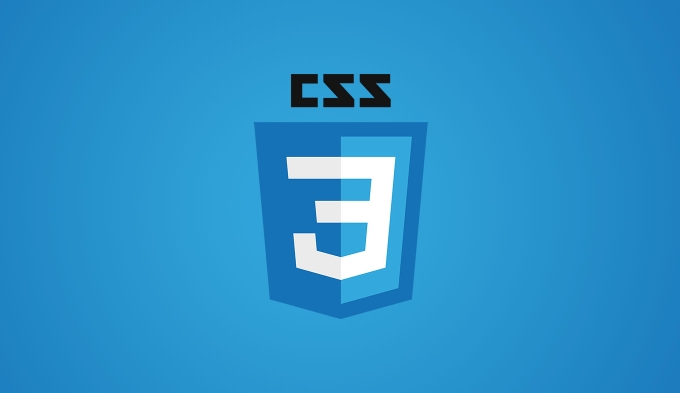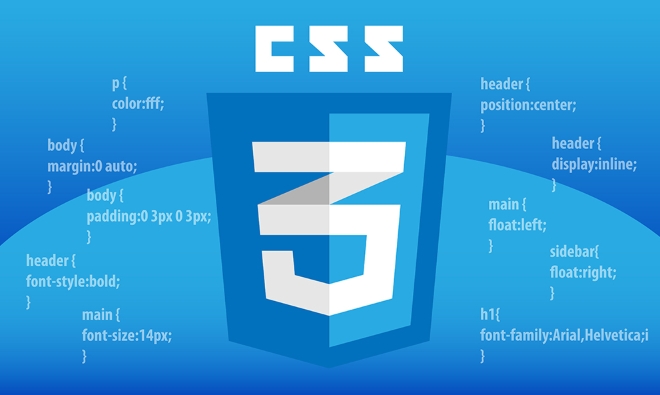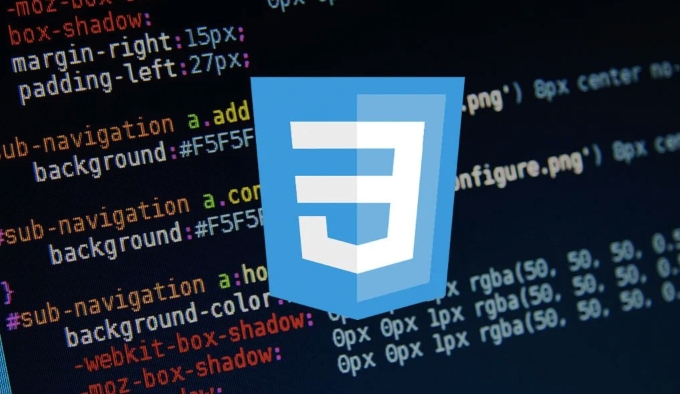How do attribute CSS Selectors work for href or data attributes?
Jun 29, 2025 am 01:11 AMAttribute selectors in HTML and CSS target elements based on their attributes. 1. Exact matches like a[] apply styles only when the attribute value is precisely as specified. 2. Partial matches using *= (contains), ^= (starts with), or $= (ends with) allow broader targeting such as dynamic URLs or file types. 3. Boolean attributes can be selected simply by presence, without needing a value, useful for UI states or flags. These selectors offer flexibility but require attention to syntax and specificity.

When working with HTML and CSS, attribute selectors are a powerful way to target elements based on their attributes — especially useful when dealing with links (href) or custom data attributes (data-*). These selectors let you style or manipulate elements without needing specific classes or IDs.

Matching Exact Attribute Values
One of the most straightforward uses of attribute selectors is matching exact values. This is especially handy for href links or data-* attributes where precision matters.

For example:
a[href="https://example.com"] {
color: red;
}This rule applies only to anchor tags pointing exactly to https://example.com. It won’t match if there’s a query string or fragment identifier added, like https://example.com?source=nav.

The same logic works for data attributes:
div[data-role="button"] {
cursor: pointer;
}This targets only those <div> elements that have data-role="button" and ignores similar ones like data-role="menu".
- Use this when you want strict control over which elements get styled.
- Keep in mind the match has to be exact — capitalization and extra characters matter.
Partial Matches with Attribute Selectors
Sometimes you don’t need an exact match. For cases like dynamic URLs or multiple data attribute variations, partial matches come in handy.
CSS offers several modifiers:
*=(contains): matches any element whose attribute value contains the substring.^=(starts with): matches if the attribute starts with the given value.$=(ends with): matches if the attribute ends with the given value.
Here’s how they might look in practice:
a[href*="example"] {
font-weight: bold;
}
a[href$=".pdf"] {
background: url(pdf-icon.png) left center no-repeat;
}These are useful for:
- Styling all external links (e.g.,
href*="https://"). - Identifying file-type links like PDFs or images.
- Targeting elements with shared but not identical data attributes.
Just remember that these can be less precise than exact matches, so test carefully.
Working with Boolean Attributes and Data Attributes
Some attributes don’t need a value to be selected — just their presence matters. This is common with boolean attributes like disabled, but also sometimes seen with data-* attributes used as flags.
For example:
button[disabled] {
opacity: 0.5;
}Or with a data attribute:
div[data-active] {
border: 2px solid green;
}This approach is great for:
- Indifferently checking whether something is present.
- Building UI states based on markup alone (like toggles or conditional styles).
You don’t need to write [data-active="true"] unless you specifically want to match that value — just [data-active] is enough to trigger the selector.
That’s basically how attribute selectors work with href and data-* attributes. They’re flexible, but small differences in syntax can make a big difference in behavior — so always double-check your conditions.
The above is the detailed content of How do attribute CSS Selectors work for href or data attributes?. For more information, please follow other related articles on the PHP Chinese website!

Hot AI Tools

Undress AI Tool
Undress images for free

Undresser.AI Undress
AI-powered app for creating realistic nude photos

AI Clothes Remover
Online AI tool for removing clothes from photos.

Clothoff.io
AI clothes remover

Video Face Swap
Swap faces in any video effortlessly with our completely free AI face swap tool!

Hot Article

Hot Tools

Notepad++7.3.1
Easy-to-use and free code editor

SublimeText3 Chinese version
Chinese version, very easy to use

Zend Studio 13.0.1
Powerful PHP integrated development environment

Dreamweaver CS6
Visual web development tools

SublimeText3 Mac version
God-level code editing software (SublimeText3)
 CSS tutorial for creating loading spinners and animations
Jul 07, 2025 am 12:07 AM
CSS tutorial for creating loading spinners and animations
Jul 07, 2025 am 12:07 AM
There are three ways to create a CSS loading rotator: 1. Use the basic rotator of borders to achieve simple animation through HTML and CSS; 2. Use a custom rotator of multiple points to achieve the jump effect through different delay times; 3. Add a rotator in the button and switch classes through JavaScript to display the loading status. Each approach emphasizes the importance of design details such as color, size, accessibility and performance optimization to enhance the user experience.
 Addressing CSS Browser Compatibility issues and prefixes
Jul 07, 2025 am 01:44 AM
Addressing CSS Browser Compatibility issues and prefixes
Jul 07, 2025 am 01:44 AM
To deal with CSS browser compatibility and prefix issues, you need to understand the differences in browser support and use vendor prefixes reasonably. 1. Understand common problems such as Flexbox and Grid support, position:sticky invalid, and animation performance is different; 2. Check CanIuse confirmation feature support status; 3. Correctly use -webkit-, -moz-, -ms-, -o- and other manufacturer prefixes; 4. It is recommended to use Autoprefixer to automatically add prefixes; 5. Install PostCSS and configure browserslist to specify the target browser; 6. Automatically handle compatibility during construction; 7. Modernizr detection features can be used for old projects; 8. No need to pursue consistency of all browsers,
 What is the difference between display: inline, display: block, and display: inline-block?
Jul 11, 2025 am 03:25 AM
What is the difference between display: inline, display: block, and display: inline-block?
Jul 11, 2025 am 03:25 AM
Themaindifferencesbetweendisplay:inline,block,andinline-blockinHTML/CSSarelayoutbehavior,spaceusage,andstylingcontrol.1.Inlineelementsflowwithtext,don’tstartonnewlines,ignorewidth/height,andonlyapplyhorizontalpadding/margins—idealforinlinetextstyling
 Styling visited links differently with CSS
Jul 11, 2025 am 03:26 AM
Styling visited links differently with CSS
Jul 11, 2025 am 03:26 AM
Setting the style of links you have visited can improve the user experience, especially in content-intensive websites to help users navigate better. 1. Use CSS's: visited pseudo-class to define the style of the visited link, such as color changes; 2. Note that the browser only allows modification of some attributes due to privacy restrictions; 3. The color selection should be coordinated with the overall style to avoid abruptness; 4. The mobile terminal may not display this effect, and it is recommended to combine it with other visual prompts such as icon auxiliary logos.
 Creating custom shapes with css clip-path
Jul 09, 2025 am 01:29 AM
Creating custom shapes with css clip-path
Jul 09, 2025 am 01:29 AM
Use the clip-path attribute of CSS to crop elements into custom shapes, such as triangles, circular notches, polygons, etc., without relying on pictures or SVGs. Its advantages include: 1. Supports a variety of basic shapes such as circle, ellipse, polygon, etc.; 2. Responsive adjustment and adaptable to mobile terminals; 3. Easy to animation, and can be combined with hover or JavaScript to achieve dynamic effects; 4. It does not affect the layout flow, and only crops the display area. Common usages are such as circular clip-path:circle (50pxatcenter) and triangle clip-path:polygon (50%0%, 100 0%, 0 0%). Notice
 How to create responsive images using CSS?
Jul 15, 2025 am 01:10 AM
How to create responsive images using CSS?
Jul 15, 2025 am 01:10 AM
To create responsive images using CSS, it can be mainly achieved through the following methods: 1. Use max-width:100% and height:auto to allow the image to adapt to the container width while maintaining the proportion; 2. Use HTML's srcset and sizes attributes to intelligently load the image sources adapted to different screens; 3. Use object-fit and object-position to control image cropping and focus display. Together, these methods ensure that the images are presented clearly and beautifully on different devices.
 What are common CSS browser inconsistencies?
Jul 26, 2025 am 07:04 AM
What are common CSS browser inconsistencies?
Jul 26, 2025 am 07:04 AM
Different browsers have differences in CSS parsing, resulting in inconsistent display effects, mainly including the default style difference, box model calculation method, Flexbox and Grid layout support level, and inconsistent behavior of certain CSS attributes. 1. The default style processing is inconsistent. The solution is to use CSSReset or Normalize.css to unify the initial style; 2. The box model calculation method of the old version of IE is different. It is recommended to use box-sizing:border-box in a unified manner; 3. Flexbox and Grid perform differently in edge cases or in old versions. More tests and use Autoprefixer; 4. Some CSS attribute behaviors are inconsistent. CanIuse must be consulted and downgraded.
 Demystifying CSS Units: px, em, rem, vw, vh comparisons
Jul 08, 2025 am 02:16 AM
Demystifying CSS Units: px, em, rem, vw, vh comparisons
Jul 08, 2025 am 02:16 AM
The choice of CSS units depends on design requirements and responsive requirements. 1.px is used for fixed size, suitable for precise control but lack of elasticity; 2.em is a relative unit, which is easily caused by the influence of the parent element, while rem is more stable based on the root element and is suitable for global scaling; 3.vw/vh is based on the viewport size, suitable for responsive design, but attention should be paid to the performance under extreme screens; 4. When choosing, it should be determined based on whether responsive adjustments, element hierarchy relationships and viewport dependence. Reasonable use can improve layout flexibility and maintenance.






